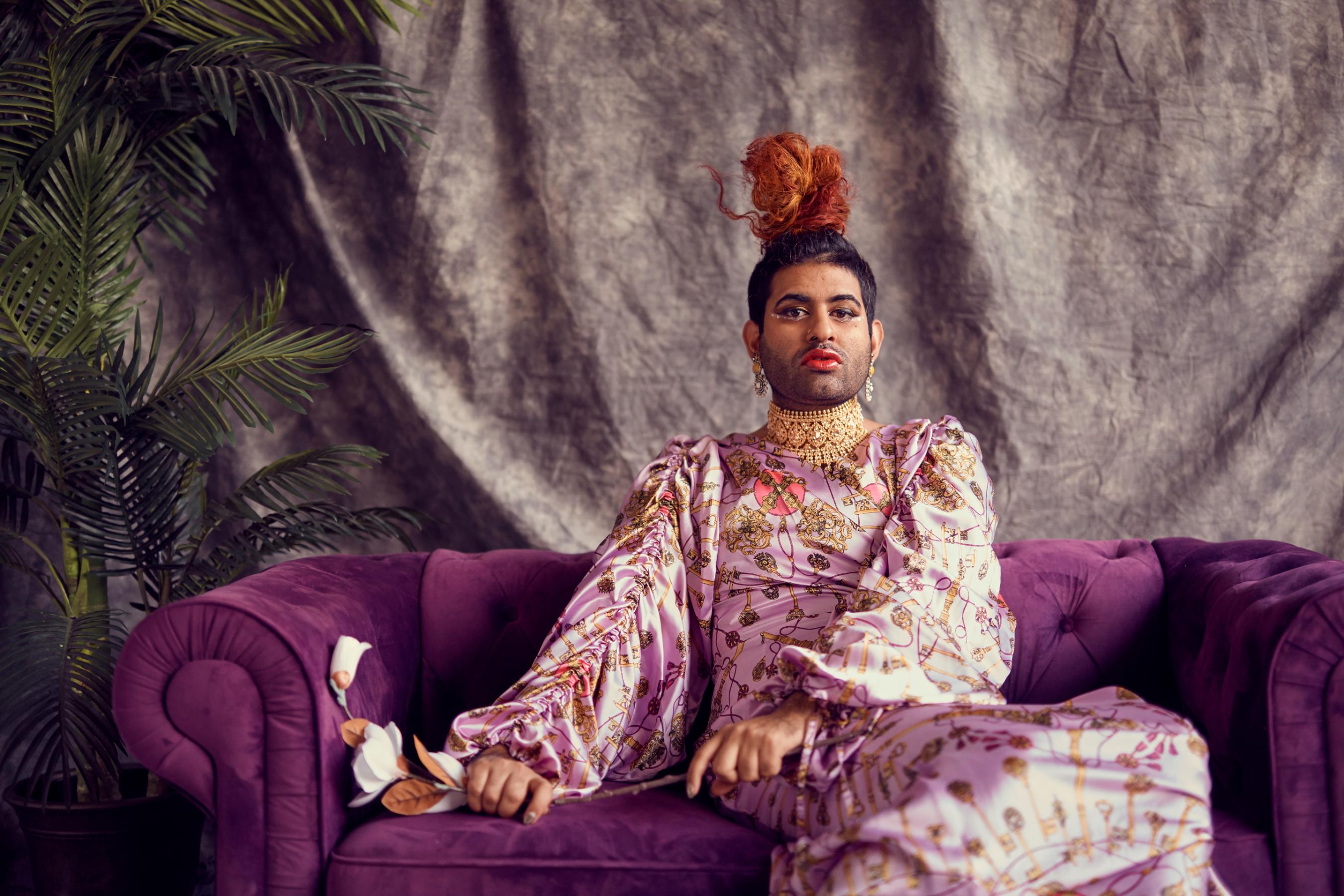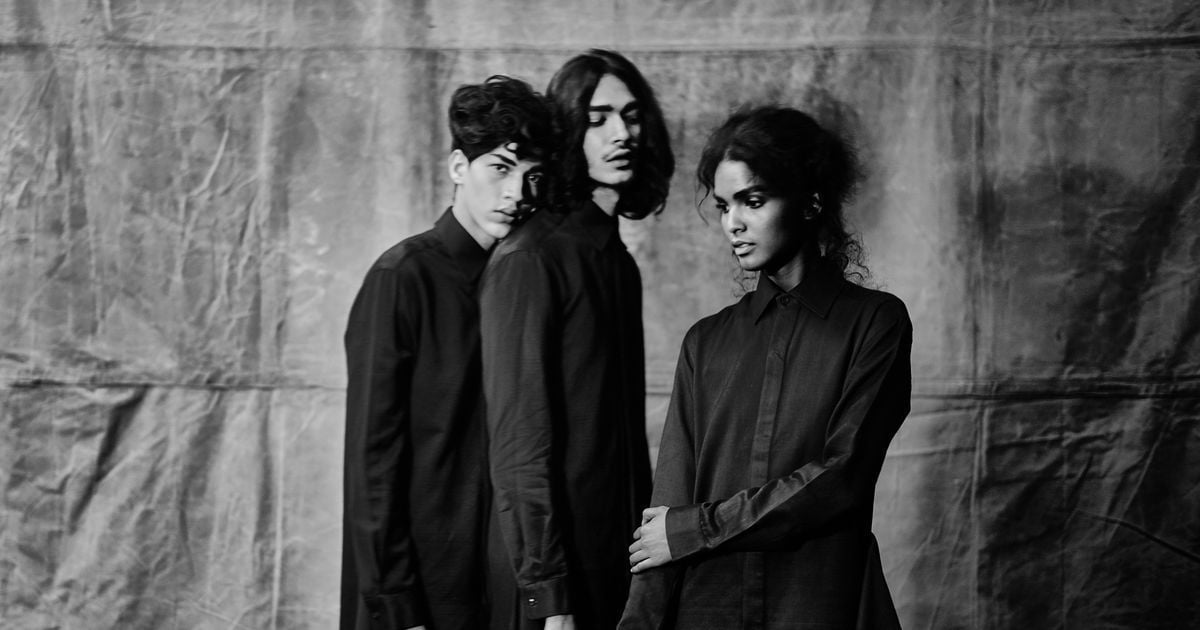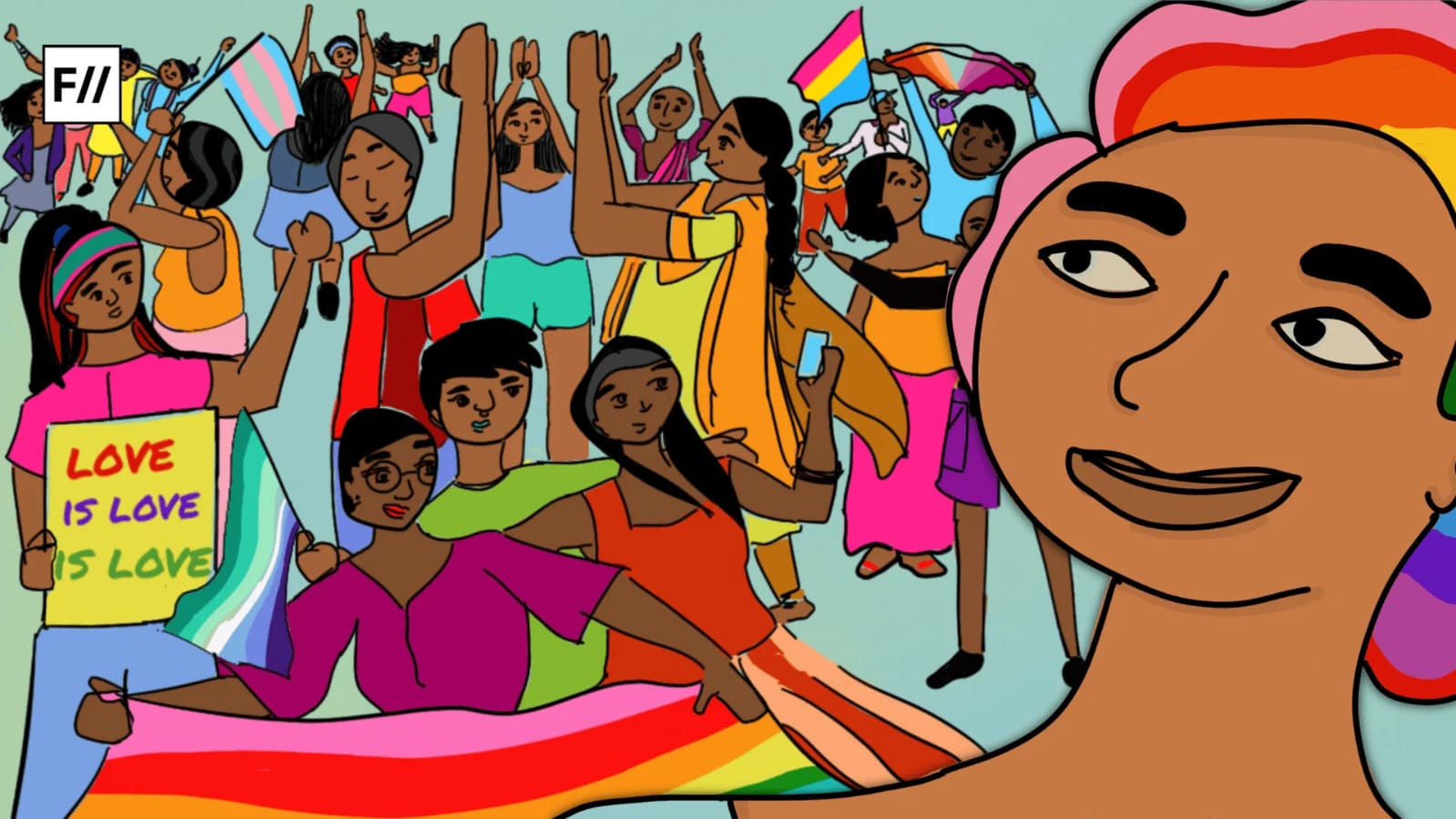The patriarchal society we live in mandates us to behave and appear according to our genders assigned at birth. Society has conditioned us to believe that fashion too has to be gendered – dresses and makeup for women and suits for men. The performance of gender through fashion and appearance is patriarchy’s way of reinstating the gender binary.
People who express themselves beyond this is often vilified or in more liberal spaces, expected to have an androgynous presentation. Genderless fashion erases the binary and creates an inclusive environment for everyone to express their desired selves.
But genderless fashion should not be equated with cross-dressing. Cross-dressing is merely the act of wearing clothing typical to the opposite sex. It is an act that doesn’t transgress the diction of the gender binary. Moreover, in many historical narratives and in pop-culture, it has been be used a tool to ridicule or humor. On the other hand, genderless fashion breaks the traditions of what is historically considered feminine or masculine. It doesn’t endorse the overlapping of the two spaces but merges them into a comprehensive whole. T
he different wardrobes for men and women are broken down and the best elements are juxtaposed to create fashion that is accessible to all genders. It empowers people by giving them the liberty to wear whatever they want and present themselves however they wish to.

By including genderless expression as a part of everyday life, we are making progress as feminists as well. As the gender binary is bent by the advent of gender-neutral fashion, it is being pushed to a point of breakage. The endorsement of this movement will also help queer individuals to have the safe space that heteronormative traditions have denied them. This movement is a first step towards the formation of a genderless society where individuals would be free of gender roles – the collateral baggage that comes with the sex we are assigned at birth
The genderless movement first began around the 1920s, when Coco Chanel put elements of men’s clothing into their pieces. It later gained more popularity with the evolution of the feminist movement and with the advent of drag culture. Much before Harry Styles posed for Vogue in a dress and a tuxedo jacket, the idea of gendered fashion had been challenged by the transgender and non-binary community throughout the world.
But the queer community was marginalised and discriminated against for exhibiting genderless fashion. It is only now, when the cis-gender heterosexual people have begun to have a more gender-neutral expression, that genderless fashion has garnered mainstream acceptance. With the popularity of genderless fashion amongst the young generation, the acceptance and prioritisation of individual gender expression is becoming very important.
Genderless fashion, though now a phenomenon in the West, has been a part of Asian and South-asian cultures for a very long time. Looking into Indian mythology we find the Ardhanarishvara who is featured in silhouettes of both dhoti and lehengas. Fashion stylist Ekta Rajani says, “Our goddesses were bare-chested, and men and women both wore loincloths. Ditto with kurtas-pyjamas, dhotis, even angarakhas. We had it, we lost touch with it, and now the world is waking up to it again.” In Korea, genderless fashion was predominant in the K-pop industry while genderless brands like Comme des Garçons and Yohji Yamamoto pioneered in countries like Japan and China.
Also read: Could Androgyny In Fashion Help Build A Genderfluid Society?

The most popular accessory in the exhibition of genderless fashion now is heels. Historically considered as feminine, heels are now worn by celebrities like Harry Styles, Lil Nas X, Billy Porter and others. Genderless fashion expression in India has surged in the past few years because of celebrities like Ranveer Singh who have been seen on several occasions wearing attires that are otherwise considered as feminine.
What is important to understand is that genderless fashion is not a mere trend for everyone to hop on, it is a political statement that is still not entirely accepted because it destabilises patriarchal, heteronormative rules. So, calling Ayushmann Khurana “brave” for posing in genderless attire makes the entire movement seem like something to be feared of
More gender neutral expressions of fashion are presented by Timothee Chalamet, Billie Eilish and Jaden Smith. With the rising popularity of K-pop at a global stage, the entire distinction of masculinity and femininity that the binary creates in terms of fashion is slowly being annihilated. Influencers like Eugene Lee Yang, Alok Vaid Menon, Sushant Divgkr, Jamie Windust have always exhibited and endorsed genderless fashion. Recently Pushpak Sen from Kolkata created headlines for slaying a saree in the streets of Milan.
By including genderless expression as a part of everyday life, we are making progress as feminists as well. As the gender binary is bent by the advent of gender-neutral fashion, it is being pushed to a point of breakage. The endorsement of this movement will also help queer individuals to have the safe space that heteronormative traditions have denied them. This movement is a first step towards the formation of a genderless society where individuals would be free of gender roles – the collateral baggage that comes with the sex we are assigned at birth.

But the genderless movement has been misinterpreted by many. While Vogue Korea features BTS rapper Suga in attire that is definitely genderless, in a very casual way, GQ India features Ayushmann Khurana in similar pieces and mislabels it as “gender-fluid.”
What is important to understand is that genderless fashion is not a mere trend for everyone to hop on, it is a political statement that is still not entirely accepted because it destabilises patriarchal, heteronormative rules. So, calling Ayushmann Khurana “brave” for posing in genderless attire makes the entire movement seem like something to be feared of.
Dressing in a way for which queer individuals have been ostracised for ages and which now has finally started gaining acceptance, shouldn’t be an act of bravery. This takes away from the normalisation of genderless fashion, the acceptance of which many individuals have fought for ages.
Also read: Ayushman Khurrana’s GQ India Cover: Thoughts From A Gender Fluid Person
Featured Image Source: Scroll.in
About the author(s)
Udhriti Sarkar is a post-graduate student at Calcutta University. When she is not obsessing over fictional characters, she observes people and writes about them





What a transphobic piece. Wearing clothes that are gendered is an essential part of gender expression for transwomen and transmen. You’re taking away their ability to identify into a particular gender by imposing new fashion standards! Not everyone is comfortable with top or bottom surgery. Gendered clothing is therefore one of the sole healthy ways of gender expression, and part of freedom for trans people everywhere.
As for your non sensical difference between Genderless and Gender fluidity- it is ridiculous and transphobic. People have been ostracised in the past for not conforming to gendered clothing. My own Maharashtrian mother was ostracised for wearing the “manly” nine yard saree in UP. People like Khurrana pave the way for all people cis or trans, to wear clothing they find comfortable or attractive. What he did is brave. Do you think cis people haven’t faced ostracisation for their non comformity? Do you think all people are 100% comfortable with gender stereotypes they’re forced to live under? So many men are called Chakka(thus showing how transphobia affects all people) for wearing eyeliners or even having an androgynous face. CIS people are part of the struggle for all genders to have their freedoms. Trans people are sick of being told what to think or live by OTHER PEOPLE’S DEFINITIONS. Self ID is an essential component of trans identity. It’s not up to others to decide whether one is agender, gender fluid, gender variant, or genderqueer.
The fact that you have an “us” vs “them” mentality is just sad. Gender fluid people like Khurrana are an essential part of in LGBTQIA++ movement. Whether he is Q or A is up to him to decide, and not people like you. He is as brave as any transwomen or trans man or non binary person or gender fluid or genderqueer person. More so, because he’s doing it publicly and paving the way for all to be more comfortable with their authentic selves.